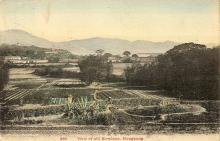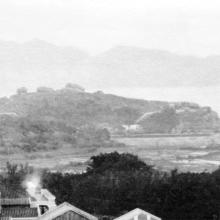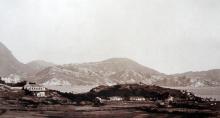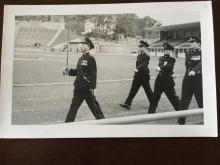Sacred Hill / Sung Wong Toi [????-1943]
Primary tabs
Submitted by Admin on Thu, 2012-02-16 11:03
Current condition:
Demolished / No longer exists
Date Place demolished:
1943-01-09
The hill disappeared during the Japanese occupation (1941-45). It was excavated and the material used to extend the Kai Tak airfield.





Comments
The wall around Sacred Hill
Over at http://gwulo.com/comment/29927#comment-29927, HF mentioned that the wall around the hill with the gate archway was built in 1915.
That's a good thing to know to help date photos of the hill, so I'm looking for a source to confirm the date. A search for sung wong toi at HKGRO gives several answers. The closest to 1915 is the Botanical and forestry annual report for 1913 (http://sunzi.lib.hku.hk/hkgro/view/a1913/201.pdf), which has an entry:
Sung Wong Toi Hill. — Mr. Li Ping, who a year or two ago, offered to build a wall around this hill free of cost to the Government, commenced operations, and trees and shrubs in the line of the proposed wall were cut down.
When the work is completed a few trees will be planted in favourable positions.
I checked the Botany & Forestry reports for 1914 and 1915, but didn't find any further mention.
Sung Wong Toi Terrace - BAAG Reports (1942-1944)
As noted here on the extension of Kai Tak Airport during WWII, work commenced on the demolishment of the Sung Wong Toi terrace and the removal of the Sung Wong Toi stone therefrom on 9 January 1943. Hong Kong News 10 January 1943 refers.
Article on Site History
A very interesting article on the history of the Sung Wong Toi, including its possible fortification in the Sung Dynasty, based on notes made in 1918 and 1937
As the evidence now stands, it is reasonably likely that the earthwork is connected, like the watch-tower recorded as erected on the summit rock, with the defence of the palace of the last Sung emperors.
Source: Further notes on the Sung Wong Toi. W. Schofield RASHK Vol 8. p 67.
Mr. Schofield served in Hong Kong as a Cadet (Administrative) Officer in the Civil Service between 1911-38. He is well known for his published articles on the archeology and geology of the Colony in pre-war years, and is M.A. (Liv. and Oxon)
Song Wong Toi stone fragments made gravestone
My late uncle once told me that my grandfather Jerome Edward Law's gravestone in the Cheung Sha Wan Catholic cemetery was carved out of the blasted fragments of the Song Wong Toi stone.